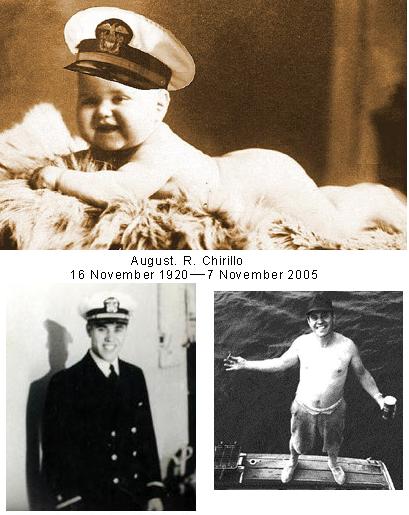The only word that describes it is madness. Every thing about it is illogical. I observed that when New Yorkers set out to relax they do so with unmatched determination. Nothing daunts them and so it was when, during a visit to the east coast during the early 1960s, my brother talked me into going fishing in his twenty-six foot cabin cruiser RING A DING DING.
With the usual curses for the early Saturday morning traffic that was wilder than a Friday evening rush hour in Seattle, Augie drove us to the Hudson River Yacht Club that was ensconced in the boondocks of the borough of Brooklyn in Paerdegat Basin, just to the north of Floyd Bennett Field. In other words, the Hudson River Yacht Club was as far as one can be from the Hudson River and still claim to be in New York City. That is just one of the many signs of how whacked out New Yorkers had become.
Much to Augie’s frustration and my relief the Club was enveloped in pea-soup fog; maybe we would call it a day. I had been talked into the excursion against my better judgment.
Regarding the fog at the Hudson River Yacht Club, my dear brother said, “You know the early-morning fogs in New York. As soon as the sun warms things up they lift quickly. Let’s get underway and creep along the seawall that borders Floyd Bennett Field. When we get to the southern part of the wall we’ll wait there for the fog to lift.”
That wasn’t my preference, but it sounded reasonable enough for me to reluctantly agree.
At the end of the wall Augie amended his plan, “Commercial fishing draggers that are equipped with radar are berthed just behind Rockaway. Since the channel is only about 100 yards away, as soon as we hear a dragger’s engine we’ll head for its sound and follow it around Rockaway Point. When the fog lifts we’ll be on the ocean-side of Rockaway and close to the Tin-Can Grounds where there should be good fishing.”
That was not an option that I would have elected, but in-command Augie didn’t seem to want my opinion. Tiny RING A DING DING, in response to the deep-throated growl of an unseen dragger’s diesel, abandoned sight of the seawall and sped toward the security of the dragger’s radar. When the ominous-sounding vessel’s bow became visible, Augie broke out in a grin of satisfaction and maneuvered to follow. Just then frantic whistle blasts came from aft. A second dragger’s bow loomed out of the fog over RING A DING DING! Obviously the second was not radar-equipped and was following close in the wake of the first. Augie’s instant response was, “To hell with him. We have the right of way!”
The skipper of the dragger behind had to fall back and keep sight of RING A DING DING in a game of follow the leader; he could not see the radar-equipped dragger. I could sense the heat of his blistering curses while Augie seemed to be reliving moments as officer of the deck when he served in USS BUTLER (DD-636). Following in line is basic doctrine for destroyer sailors.
Incredibly, not more than two minutes went by when Augie, as officer of the deck, ordered, “Keep looking up. Watch for the Marine Park Bridge.”
“Why?”
“I forgot that I need to gas up.”
“What has the bridge got to do with it?
“A minute after we pass under the bridge I’ll put the rudder over 15degrees to starboard and proceed dead slow. Within another two minutes we should spot the gas barge in Dead Horse Bay. We’ll gas up and wait there for the fog to lift.”
Thus we abandoned our position in the line as Nelson did during the battle of Cape Saint Vincent. Much to my amazement the barge materialized in the still-thick fog. We didn’t have to change course; RING A DING DING glided to a berth like a dobbin returning to its stall.
A second after paying for the gasoline Augie came up with a further addition to his plan, “You saw how I got this far. We don’t have to wait here. We’ll leave on a heading of 250 degrees and I’ll know when we’re well clear of the choppy Potato Patch off of Rockaway Point. Then we’ll head south. Afterwards we will go east for a few minutes and anchor. When the fog lifts we’ll move into the Tin-Can Grounds.”
RING A DING DING proceeded cautiously. Soon we heard a high-pitch whine that was rapidly getting louder. A pair of teenage Brooklynites, in a small hydroplane that provided only just enough buoyancy for its huge outboard engine, emerged out of the fog and whizzed past within twenty-five feet. After a few curses to bless the yoots undaunted Augie continued per the route he charted.
Next we came upon two guys who had to be even more determined than Augie to get out there and relax. They were in a rowboat equipped with beer and no compass. As we passed they asked, “Which way to the Tin-Can Grounds.”
Augie, with a bit of a chuckle advised, “Follow me as long as you can and then turn left.”
About twenty-minutes later RING A DING DING’s officer of the deck announced, “We’ll drop the hook and fish here until the fog lifts.”
After a half hour of fishing, with surprising suddenness, the fog lifted and then hung for a few minutes at about fifty-feet over the surface. Beneath the fog layer we saw Rockaway Beach. We also saw that we were in the midst of an armada of about fifty boats that occupied the Tin-Can Grounds. Nearby was the rowboat manned by the laid-back guys who had, an hour before, hailed RING A DING DING for directions.
I never again questioned the navigating ability of the master of the RING A DING DING.

***************
